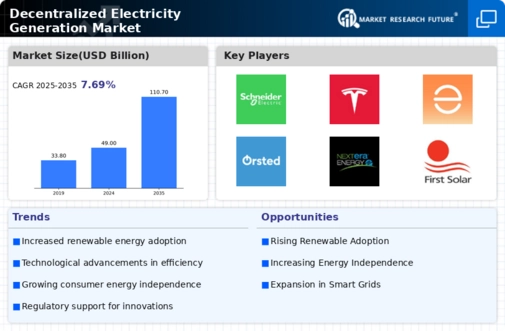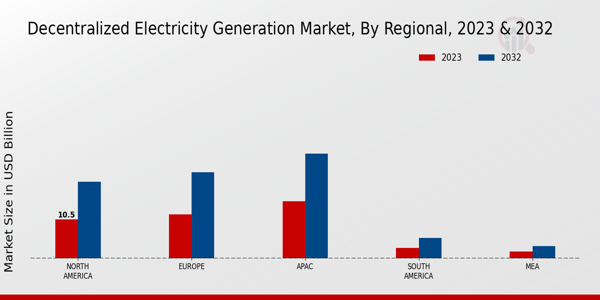The Decentralized Electricity Generation Market has been experiencing significant growth due to increasing demand for clean energy solutions, technological advancements, and the need for energy independence. As organizations and countries strive to reduce their carbon footprints, decentralized generation systems provide an innovative alternative to conventional centralized power infrastructure. This shift has led to an enhanced competitive landscape, drawing attention from established players and new entrants alike. The market comprises a diverse array of technologies, including solar, wind, and biomass energy, and entails participation from energy companies, technology developers, and service providers.
The competitive insights highlight the strategies undertaken by various stakeholders to enhance their market presence and build resilient business models centered on sustainability and efficiency. With user autonomy and reliability becoming top priorities, companies are focusing on integrating advanced technologies and innovative business practices to ensure a competitive edge.Schneider Electric is prominent in the Decentralized Electricity Generation Market, leveraging its strong expertise in energy management and automation solutions. The company has established an extensive portfolio of products and services that cater to the needs of decentralized energy systems, enabling customers to optimize energy consumption and improve overall efficiency.
Schneider Electric's innovative technologies allow for seamless integration of renewable energy sources, storage systems, and microgrids, positioning the company as a leader in this competitive market landscape. Their commitment to sustainability and renewable energy solutions is reflected in their comprehensive partner ecosystem, which strengthens their market presence further.
Moreover, Schneider Electric's global reach ensures that it can meet diverse local market needs and create customized solutions tailored for various end-users, from residential customers to large corporations and municipalities.Tesla has carved out a significant niche in the Decentralized Electricity Generation Market, particularly through its advanced energy storage solutions and solar energy technologies. The company’s innovative approach to energy generation emphasizes the integration of its electric vehicles with home energy solutions. Tesla's solar products, combined with their home battery systems, provide customers with the capability to generate and store electricity, ultimately enhancing energy independence and sustainability.
This creates attractive value propositions for users seeking sustainable configurations that lower energy costs and environmental impact. Tesla's commitment to innovation is reflected in its continuous development of cutting-edge technologies and its focus on reducing the overall costs associated with renewable energy. By effectively capturing the attention of consumers and businesses alike, Tesla reinforces its competitive position in a rapidly evolving market, where agility and forward-thinking are key to maintaining a strong foothold.
























Leave a Comment